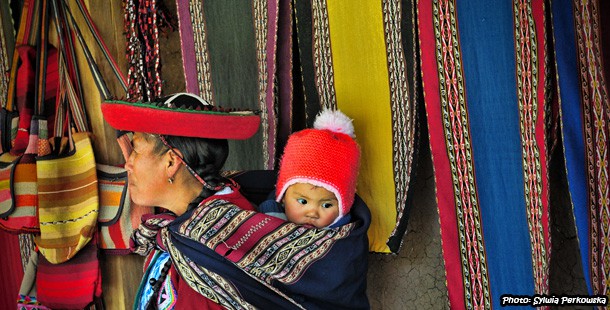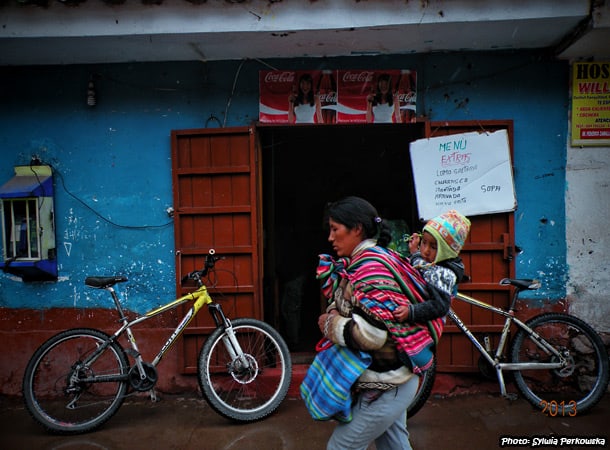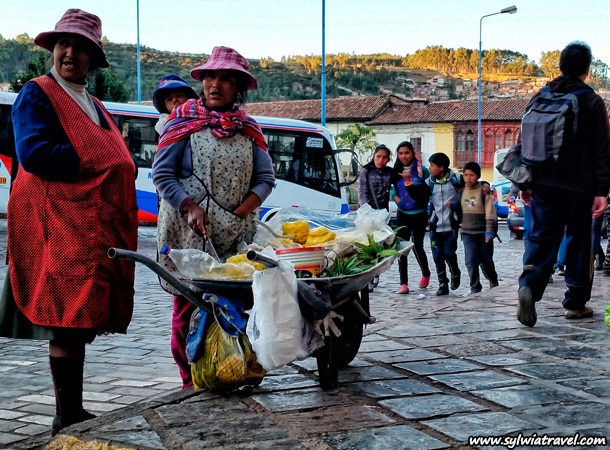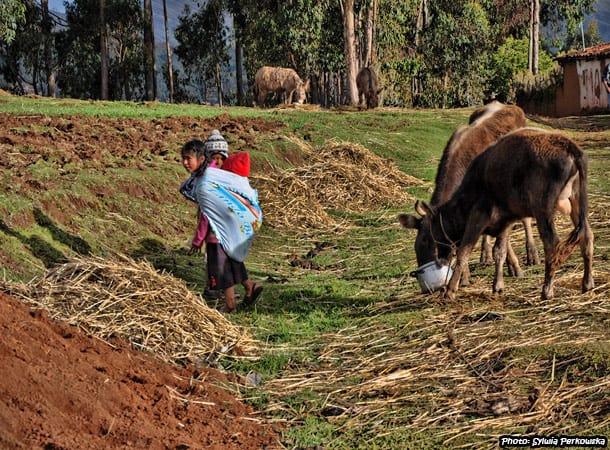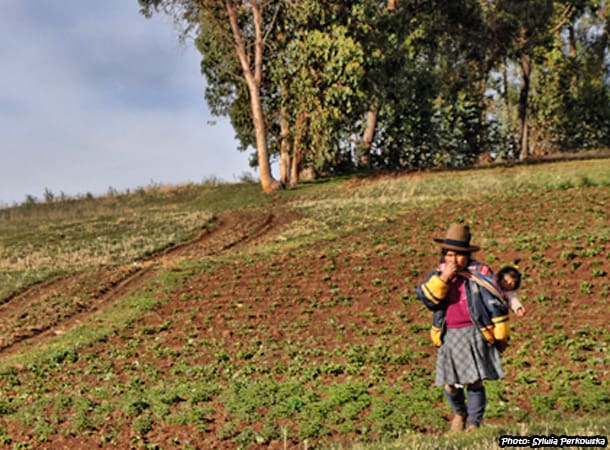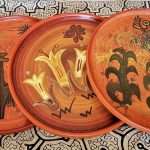Every country or region of the world has special we can call it equipment to carry the babies. In a lot of countries the most popular are strollers. But there are also areas on the world where mothers carry the babies on their backs. Very interesting article about history of babywearing you will find here. In this website you can read what kind of things were used to wear the babies in the past and chow it has changed with the time and you will see a lot of pictures.
In Peru for example the Andeans women use special kind of cloth to wear their babies. It is called manta, in Quechua lliqlla.
Manta is a traditional Peruvian carrying cloth. It is usually used to carry a variety of items like food, firewood, plants harvested for dyeing but not only (about this I wrote in other article). But not only! Peruvian mantas are also used to wear children. You can meet women with babies on their back in every situation: eating, cooking, working in the shop, in the restaurant, walking on the street. Thanks to mantas Peruvian women can do a lot of things while taking care of their children.
Babies are sleeping in mantas, sitting there and all the time are close to their mothers. In the same time mothers can do all daily duties, without being worried about the children.
Sometimes when I see children in mantas, I am afraid that they will fell down from it. But all Peruvian women who are using mantas tell that it is very comfortable and secure way. I have never tried by myself, so I need to trust them.
And actually there is no reason not to believe in that, because a lot of women wear mantas every day and use it to carry babies. If it is so popular, it can not be bad. But on the other hand the mothers wearing children in mantas need to be careful especially when are using public transport. I saw once the woman who had baby on her back and when she was leaving the bus (very fast) the head of her child hit the door. It was horrible view. Of course it was not the fault of the manta but that woman who was not careful enough.
Mantas are worn by the women over their shoulders, covering the back. They are first folded on the diagonal, and joined by two corners under the chin.

